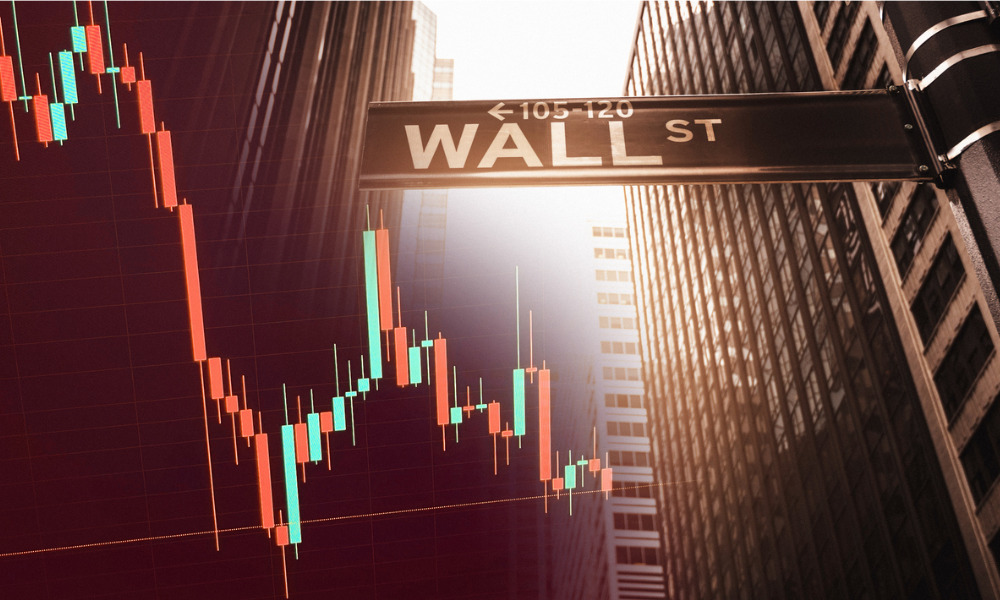

Just twenty-four days into 2024, and the S&P 500 has already blown past the Wall Street consensus over where the index will finish the year.
Helped by advances in Nvidia Corp. and Microsoft Corp, the world’s most watched equity benchmark is again on the up in Wednesday trading. Rising for five sessions, the S&P 500 just surpassed 4,867, the average level where forecasters in a Bloomberg survey pegged it 11 months from now.
Count venerated stocks-watcher Ed Yardeni among those getting nervous about the speed of the move, which builds on last year’s 24% rally thanks mostly to the expansion in valuations. Not that the 40-year veteran didn’t see it coming — his year-end forecast is 5,400 versus today’s 4,888.
Yet the speed of the advance is worrying bulls like Yardeni, even as valuations and retail-investing activity suggest this equity advance has stronger foundations than previous bouts of euphoria.
“Our main concern right now is that the S&P 500 may be starting a tech-led meltup similar to what happened during the second half of the 1990s,” the founder of Yardeni Research Inc. wrote in a note. “We are wondering whether a bout of irrational exuberance might push the multiple higher, inflating a speculative bubble in the stock market as occurred during the late 1990s.”
It’s the latest case of bullish market momentum that’s catching investing pros off-guard – after being blindsided last year by the sudden revival in risk appetite across assets.
Up 0.5% as of 1:55 p.m. in New York, the S&P 500 is poised for its fourth straight all-time high after a two-year round trip where stocks entered and exited a bear market. The Nasdaq 100 and the Dow Jones Industrial Average also advanced over the stretch, breaking record.
Even as bubble warnings percolate, stocks look notably less extended as they did as recently as three years ago, when single-session meme-stock eruptions were a daily occurrence and the Nasdaq 100’s price-earnings ratio was roughly 4 points higher than now. And unlike in the dot-com era, today’s technology firms are generating profit growth that, while not quite keeping pace with price action, is on a similar trajectory.
Consider the seven largest tech firms that also include Apple, Alphabet, Amazon.com, Meta Platforms and Tesla. Trading at 49 times profits, the cohort looks very expensive next to a P/E ratio of 17 for the average stock in the S&P 500.
But the valuations remain relatively tame viewed against the bubble era of the late 1990s. If they were to reach only half of the peak multiples of the seven largest tech stocks of that time, today’s so-called Magnificent Seven would have to rise by 55% each, according to a recent analysis by Bank of America Corp. strategists including Benjamin Bowler. That’d translate to a 15% gain for the S&P 500, all else equal.
Fueling the market’s latest leg up has been optimism over potential Federal Reserve interest-rate cuts and a rebound in corporate earnings. The Nasdaq 100 climbed 1% Wednesday as Netflix Inc. shares soared on better-than-expected subscriber numbers.
Bolstered by frenzy over artificial intelligence, shares of the seven largest tech stocks have doubled in the past year. Firms like Apple and Microsoft, which are slated to report quarterly earnings in coming weeks, are projected to announce blockbuster results. Thanks to their dominant position in everything from e-commerce to clouding and electronics, big seven’s profits probably expanded at a median pace of 39%, analyst estimates compiled by Bloomberg show. That compared with marginal growth predicted for all companies in the S&P 500.
“I wouldn’t say it’s getting bubbly, but it’s getting stretched,” said Yung-Yu Ma, chief investment officer for BMO Wealth Management. “The question as the year goes on is, are companies able to meet the high expectations that are being priced in?”
With a prevailing lack of enthusiasm among Wall Street prognosticators, it didn’t take much for stocks to exceed their target. Their projection made in December calls for the S&P 500 to rise 1.3% in 2024. That’s the least bullish year-ahead view since Bloomberg began tracking the data in 1999.
The reservation reflects flaring geopolitical tensions globally and the potential risk of an economic downturn after the Fed’s most aggressive rate hikes in decades. Yet the market has once again proved its ability to overcome headwinds.
The resilience is a reminder of the danger of being left behind. Last year, when the S&P 500 also managed to surpass Wall Street’s forecast by January, strategists initially held firm to their outlook only to find themselves scrambling to play catch-up as the market kept running higher.
Hedge funds, which trimmed their long positions in tech megacaps between mid-August and December, are returning to the group as the industry has restored leadership in the new year, according to data compiled by Morgan Stanley’s prime broker. Separate client data from JPMorgan Chase & Co. showed a similar pattern.
“What we saw in AI over the past few weeks lends credence to the adage that if you aren’t long, you’re short,” Ron Adler, JPMorgan’s head of US cash equity trading, wrote in a note to clients earlier this week. “The move in the market remains bolstered by a blend of euphoria and FOMO.”

Relationships are key to our business but advisors are often slow to engage in specific activities designed to foster them.

Whichever path you go down, act now while you're still in control.

Pro-bitcoin professionals, however, say the cryptocurrency has ushered in change.

“LPL has evolved significantly over the last decade and still wants to scale up,” says one industry executive.

Survey findings from the Nationwide Retirement Institute offers pearls of planning wisdom from 60- to 65-year-olds, as well as insights into concerns.
Streamline your outreach with Aidentified's AI-driven solutions
This season’s market volatility: Positioning for rate relief, income growth and the AI rebound
